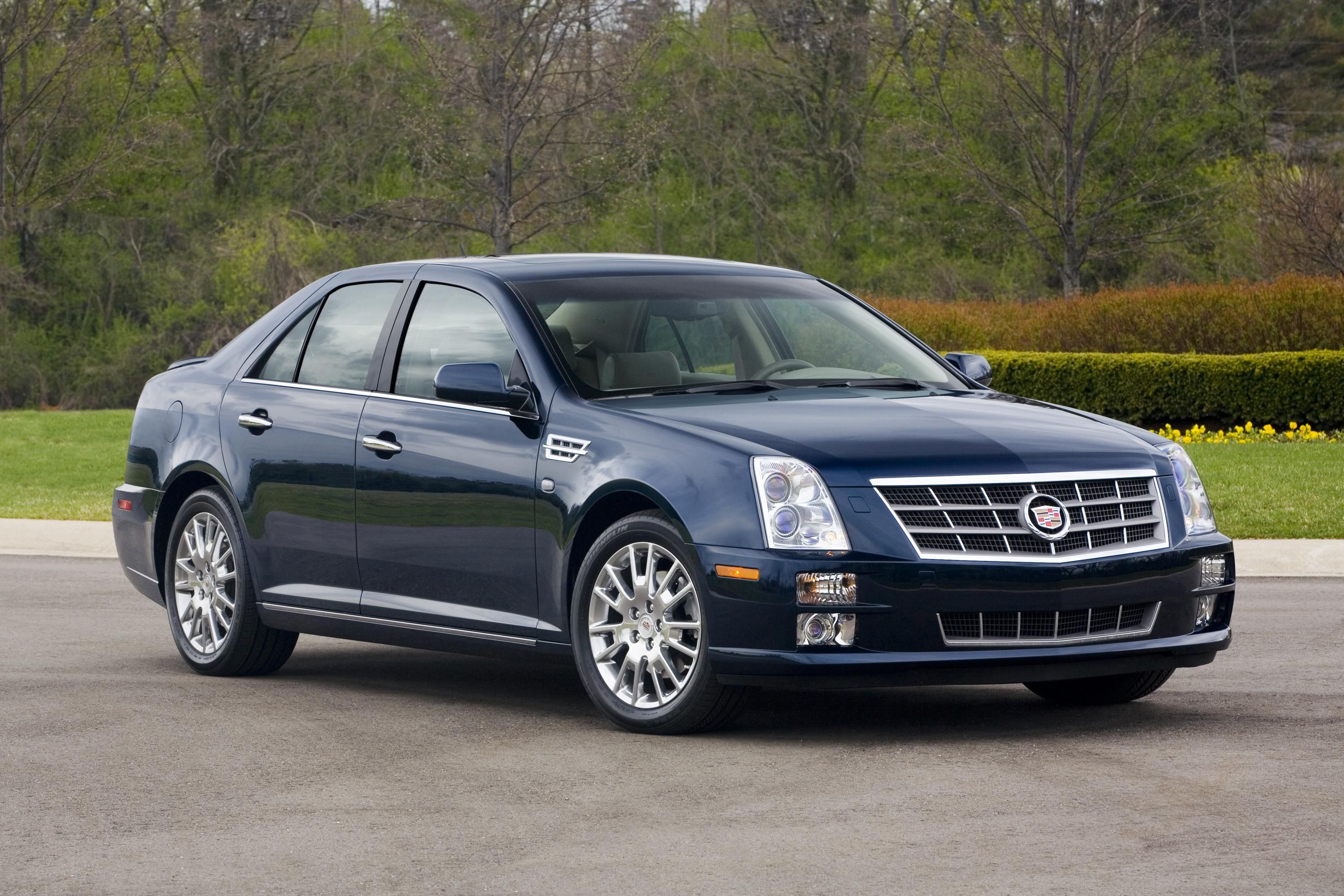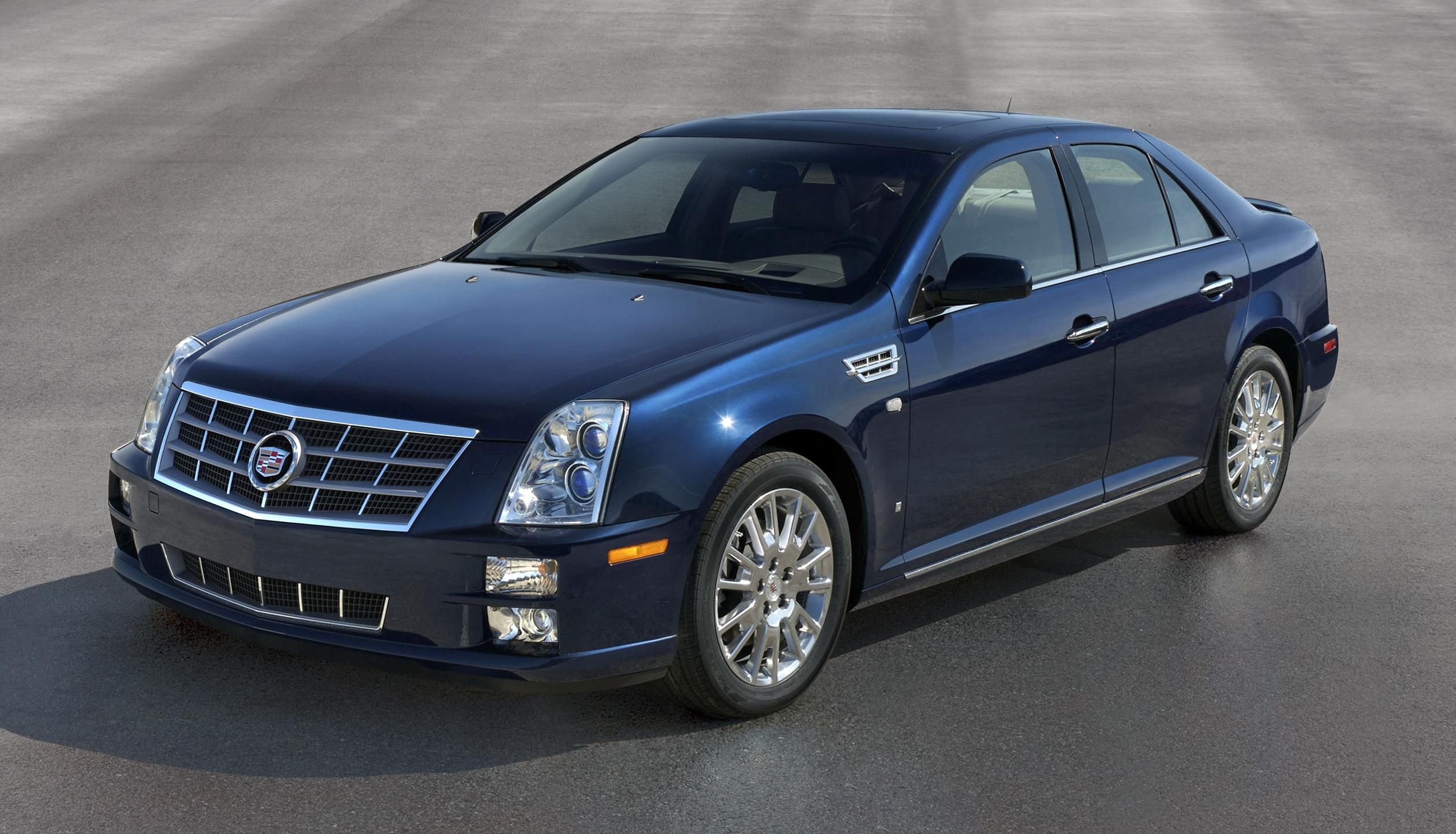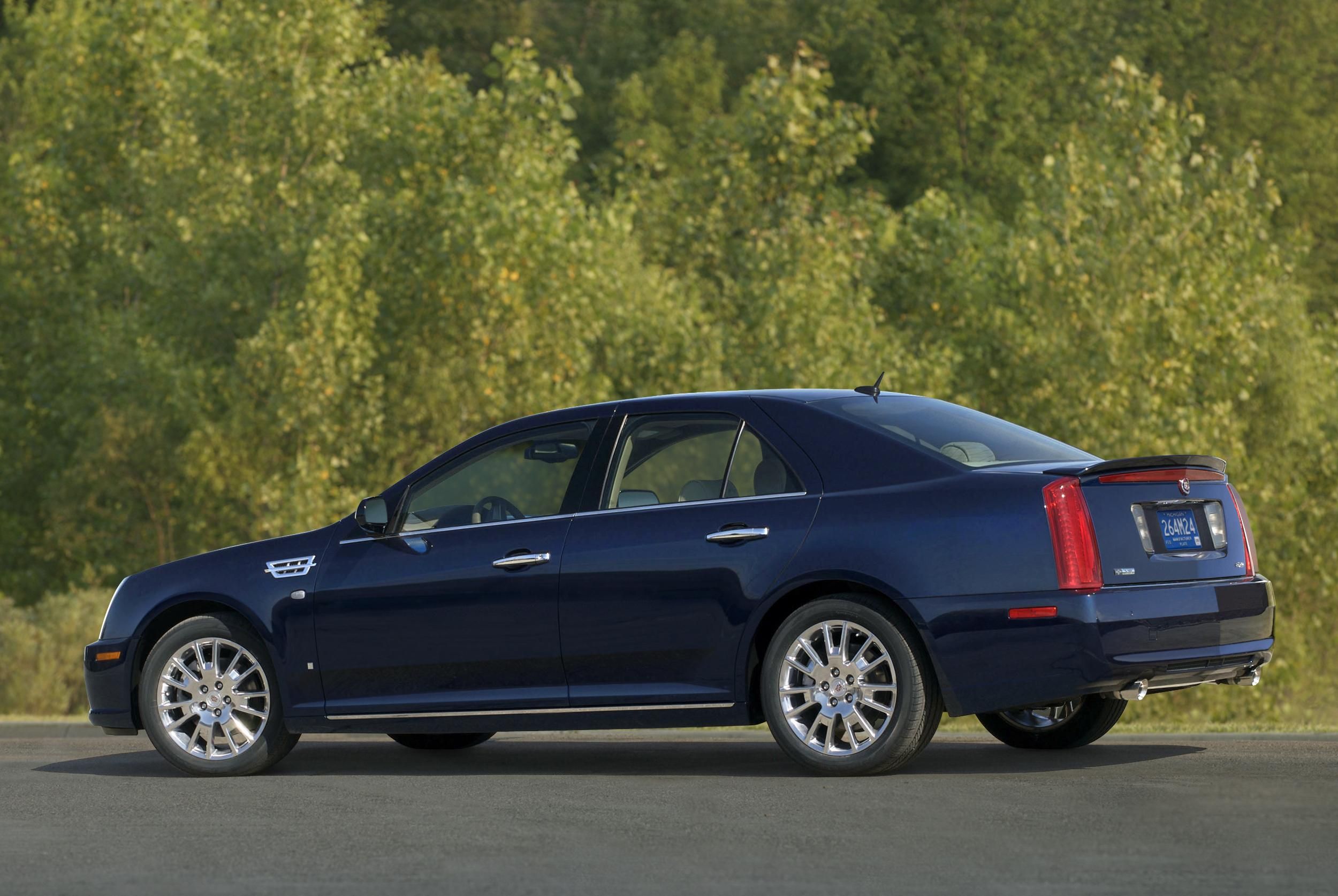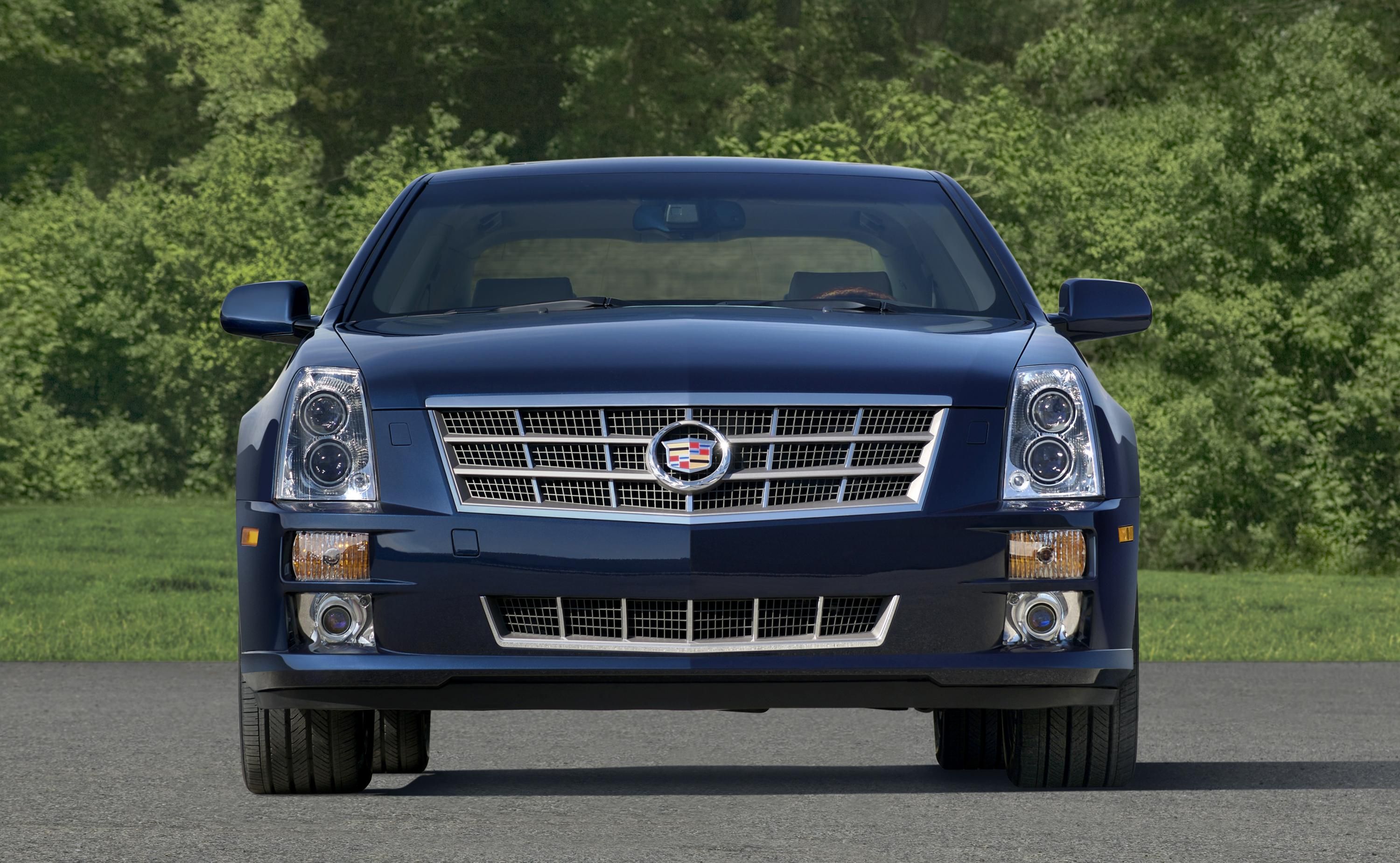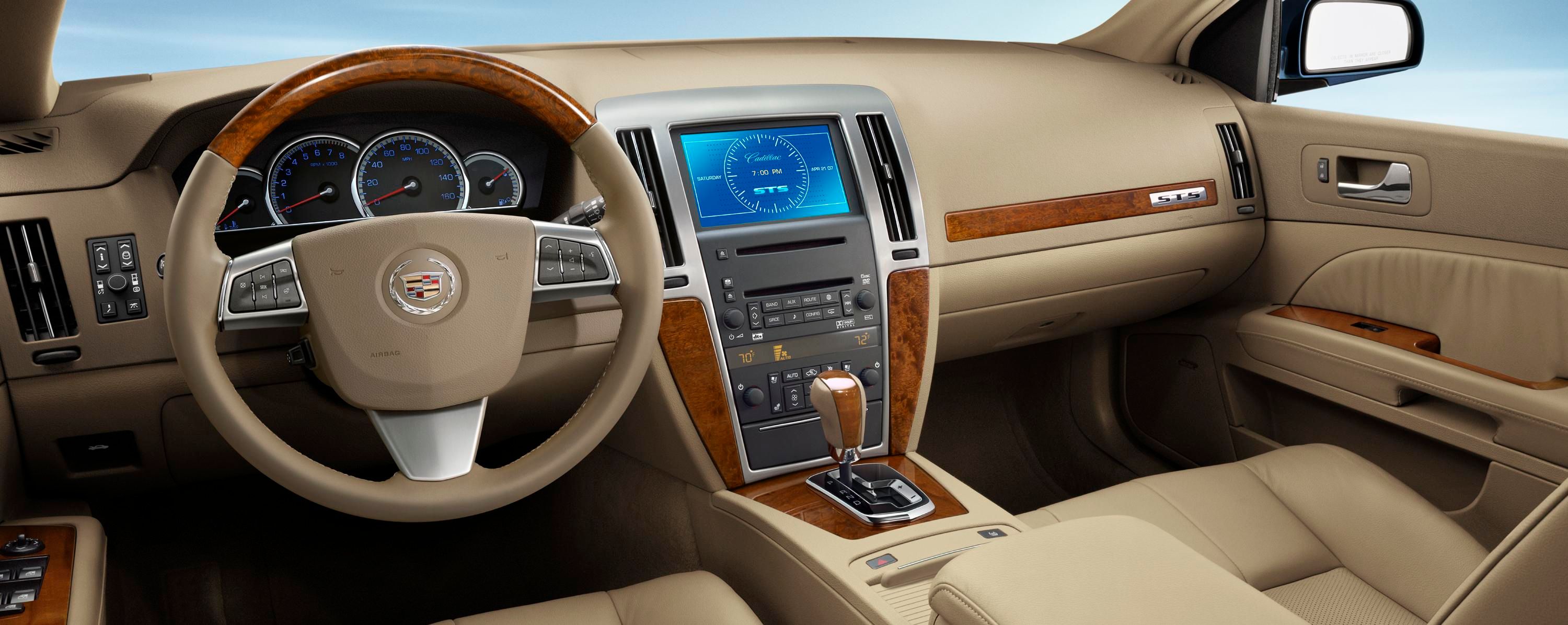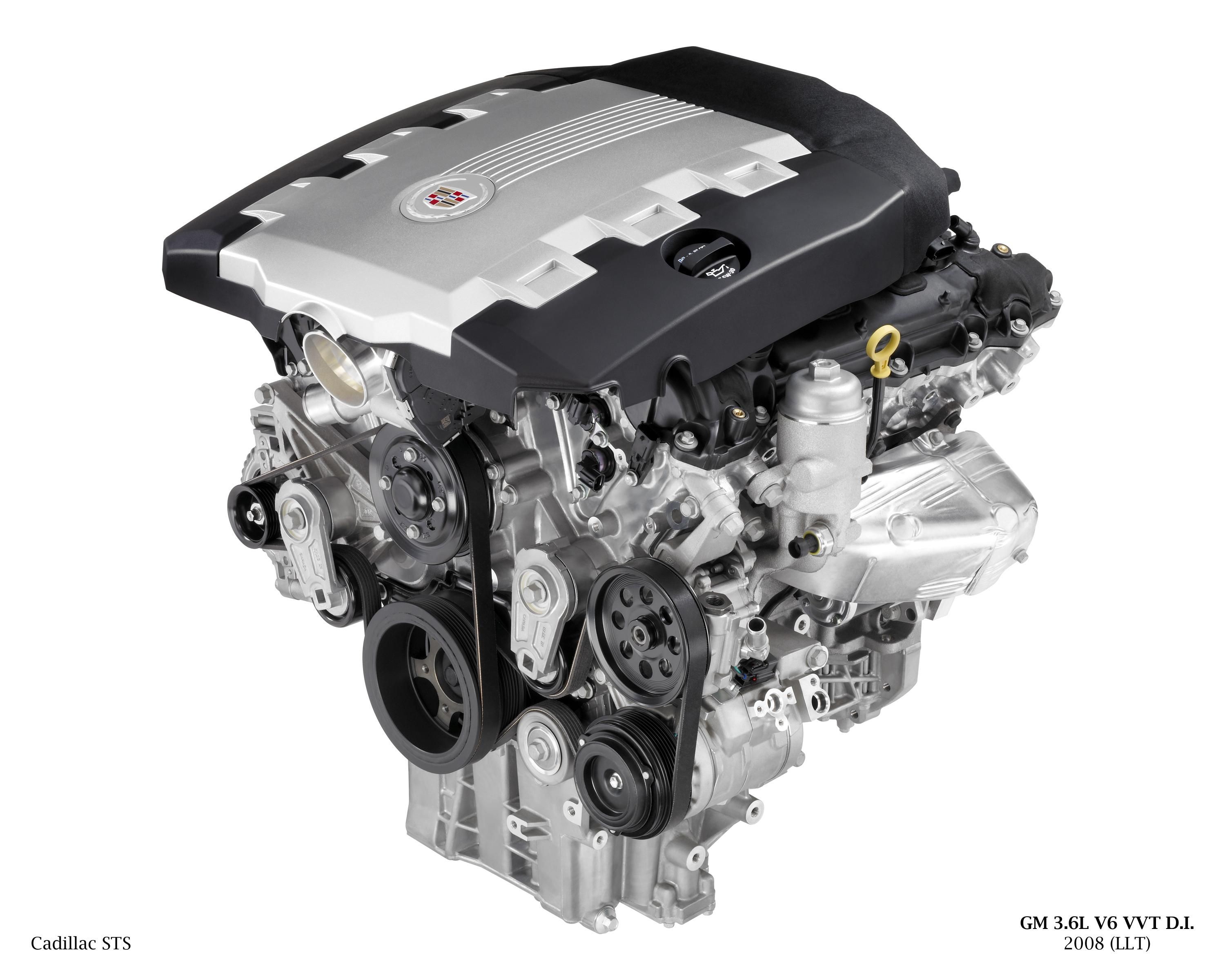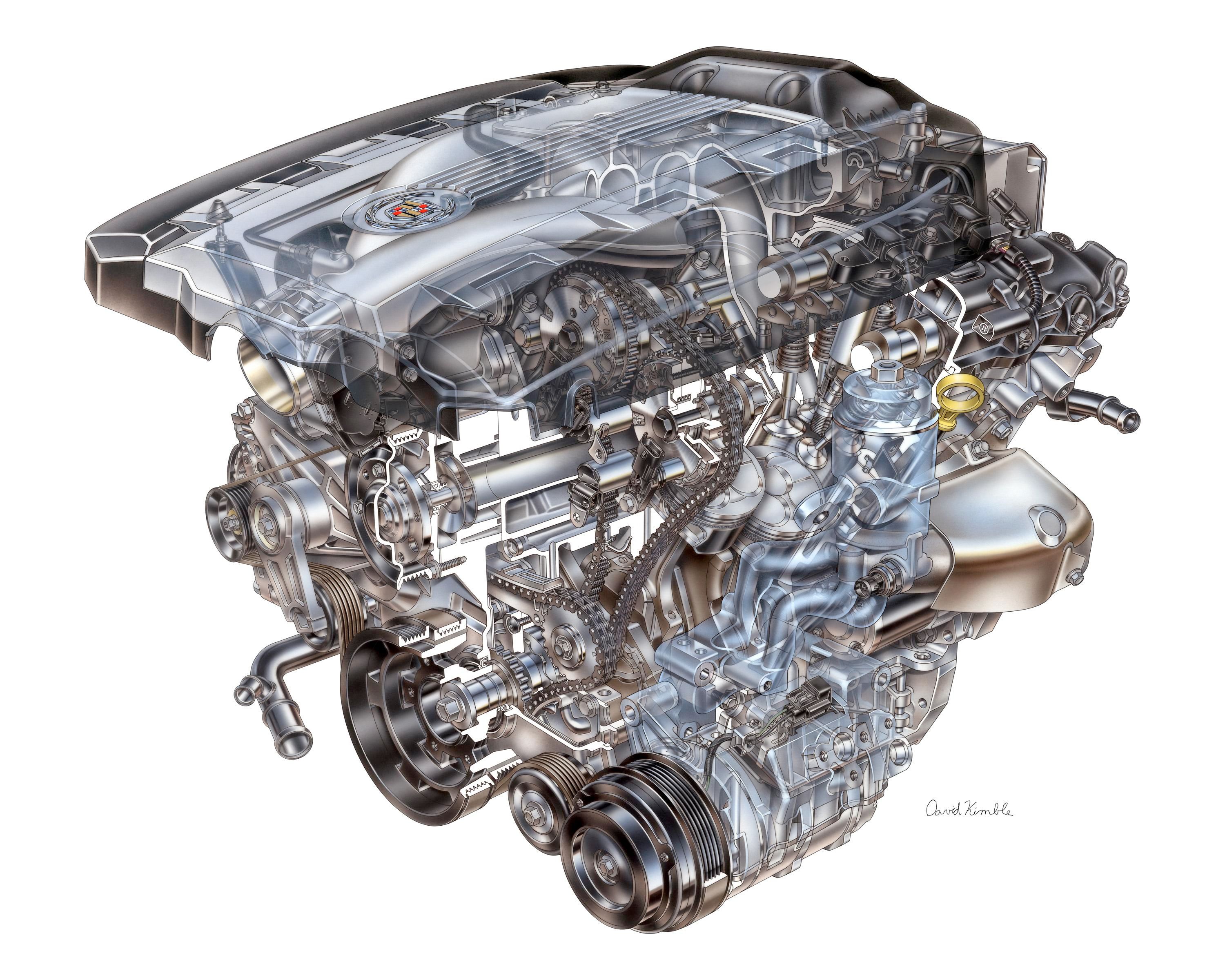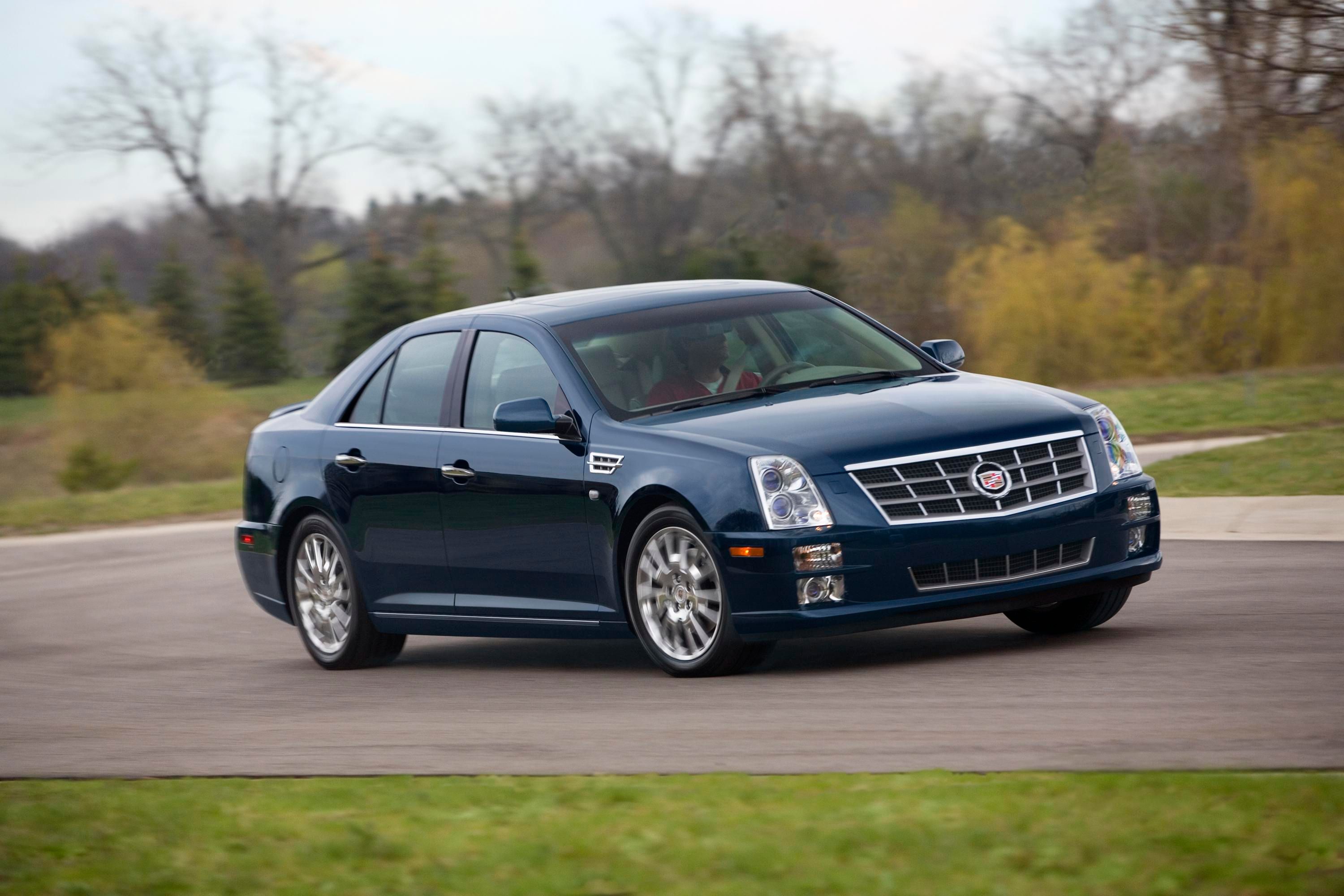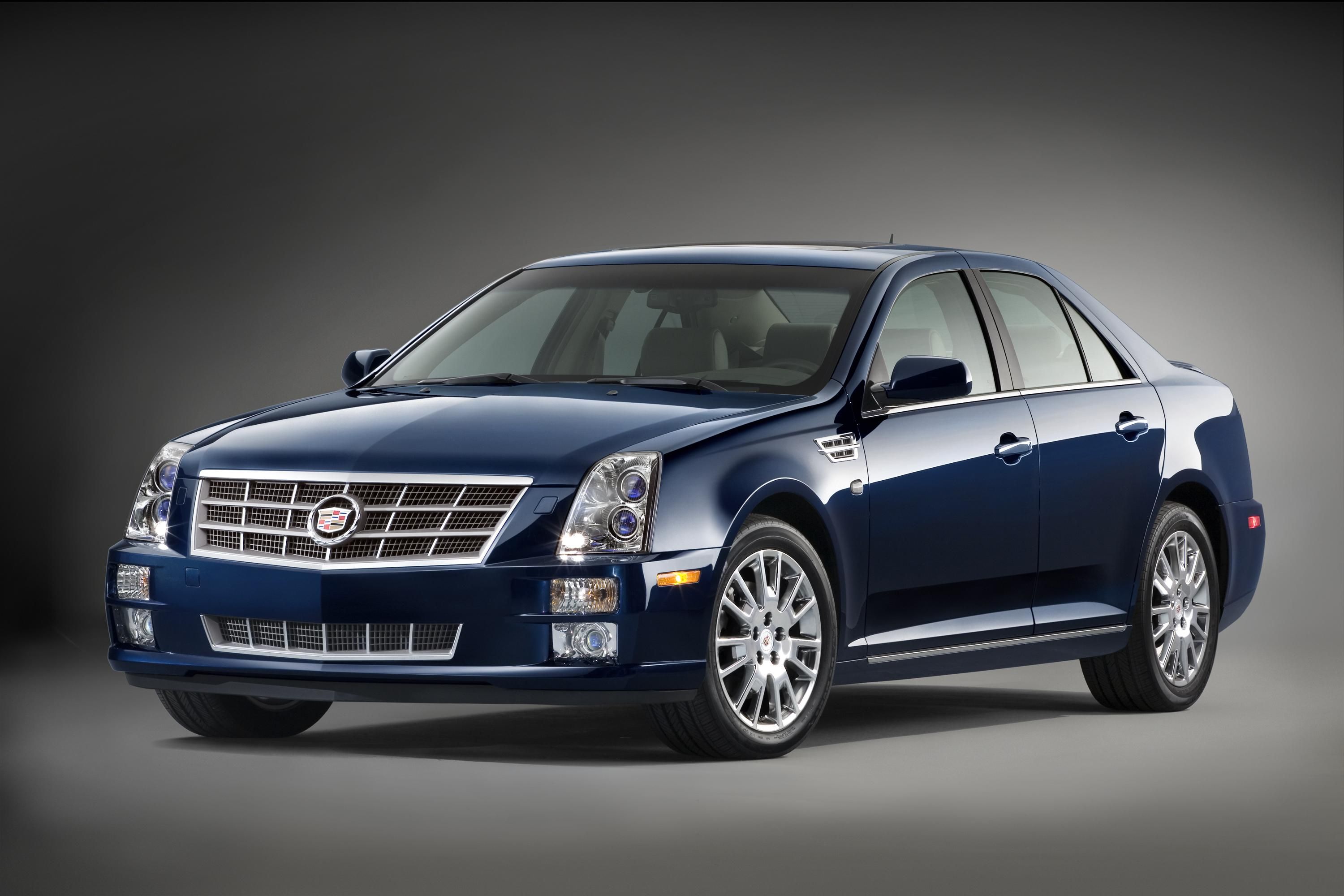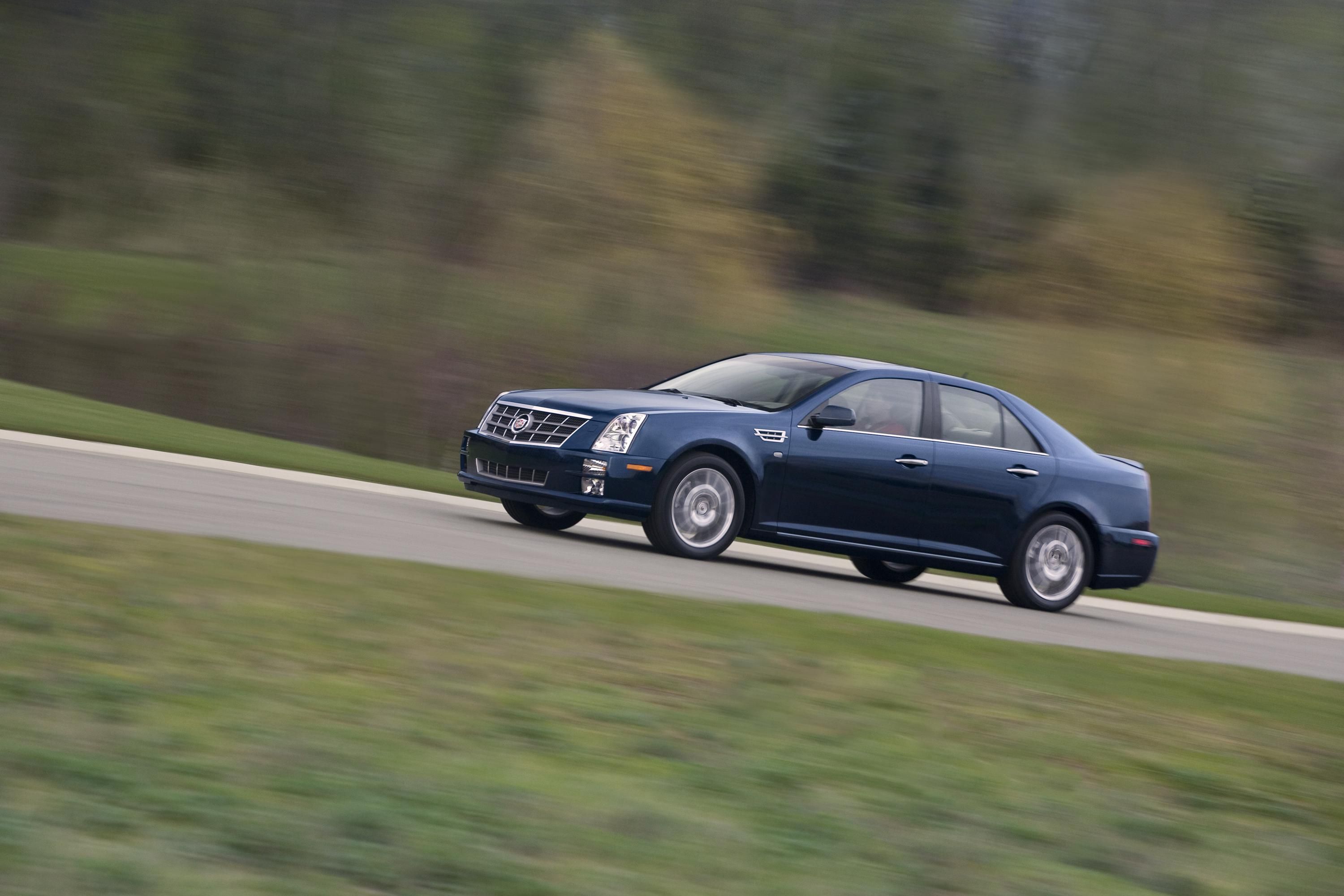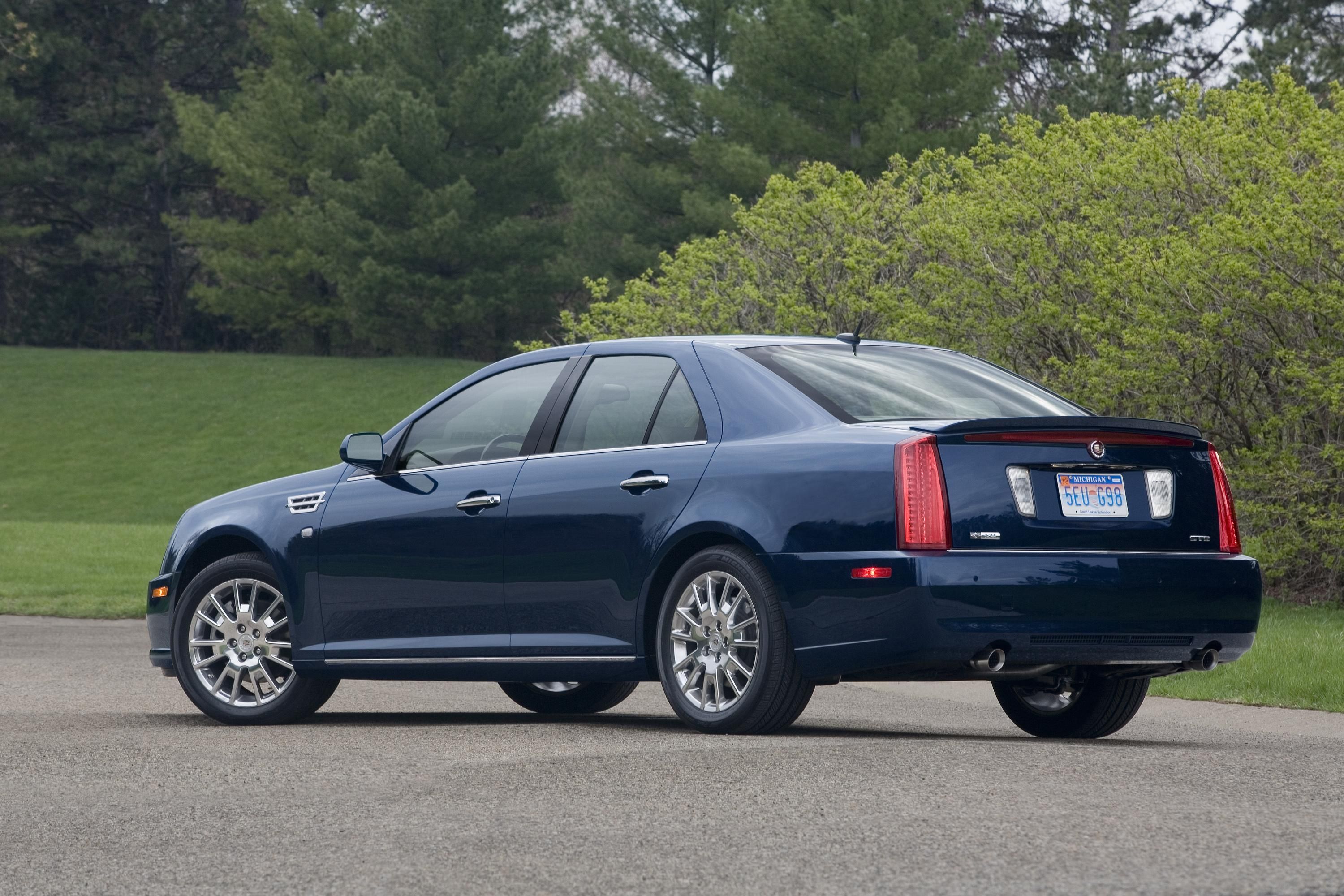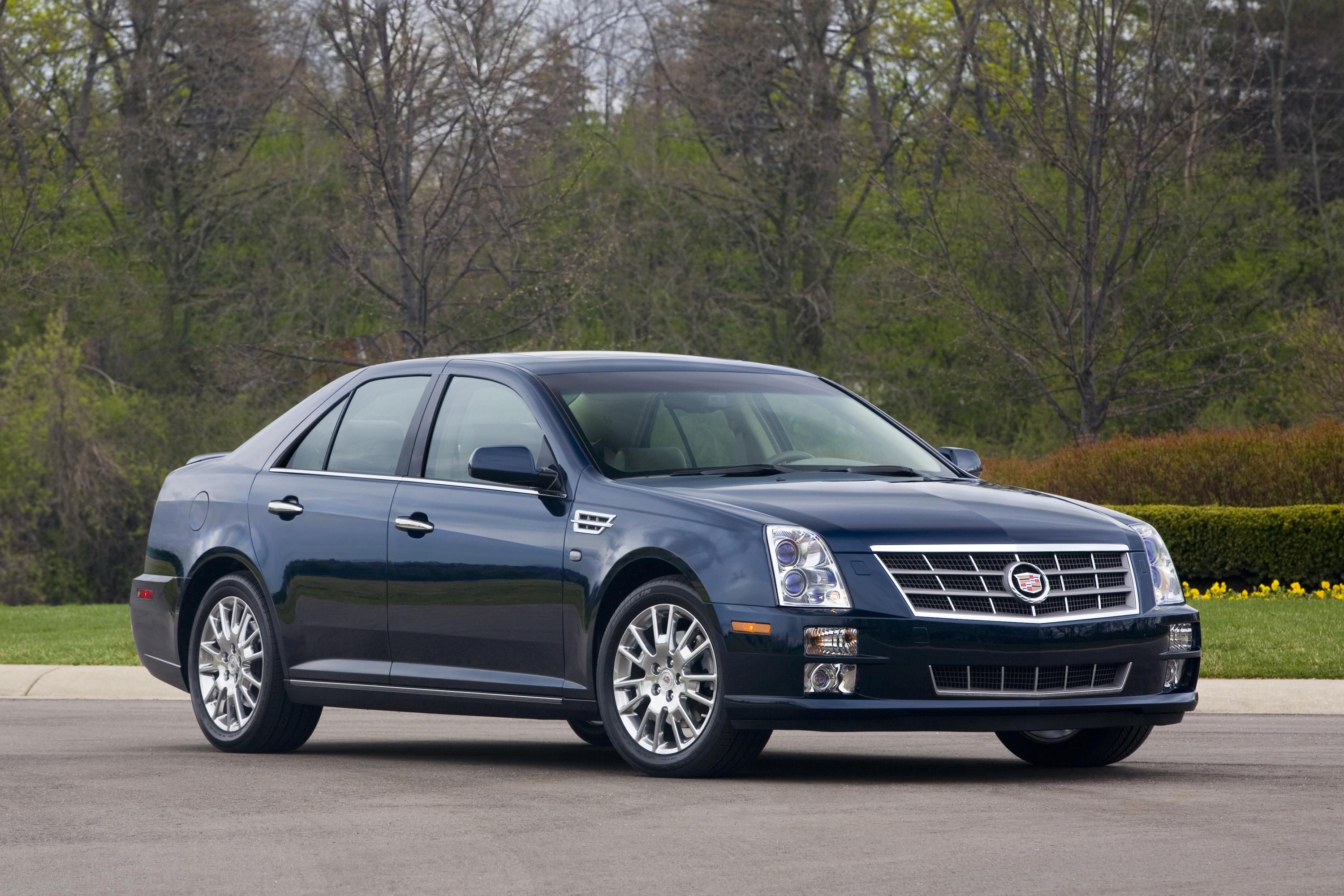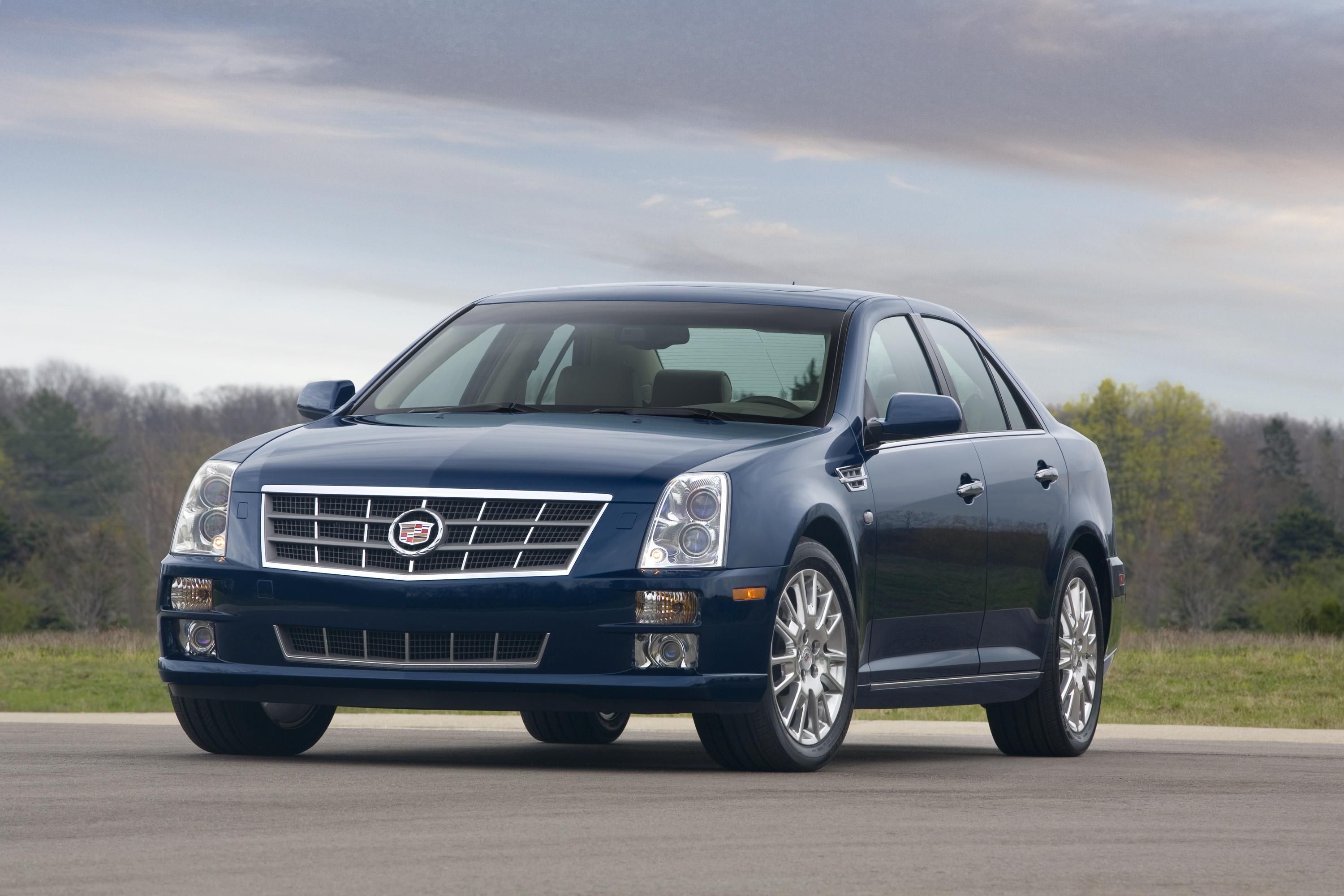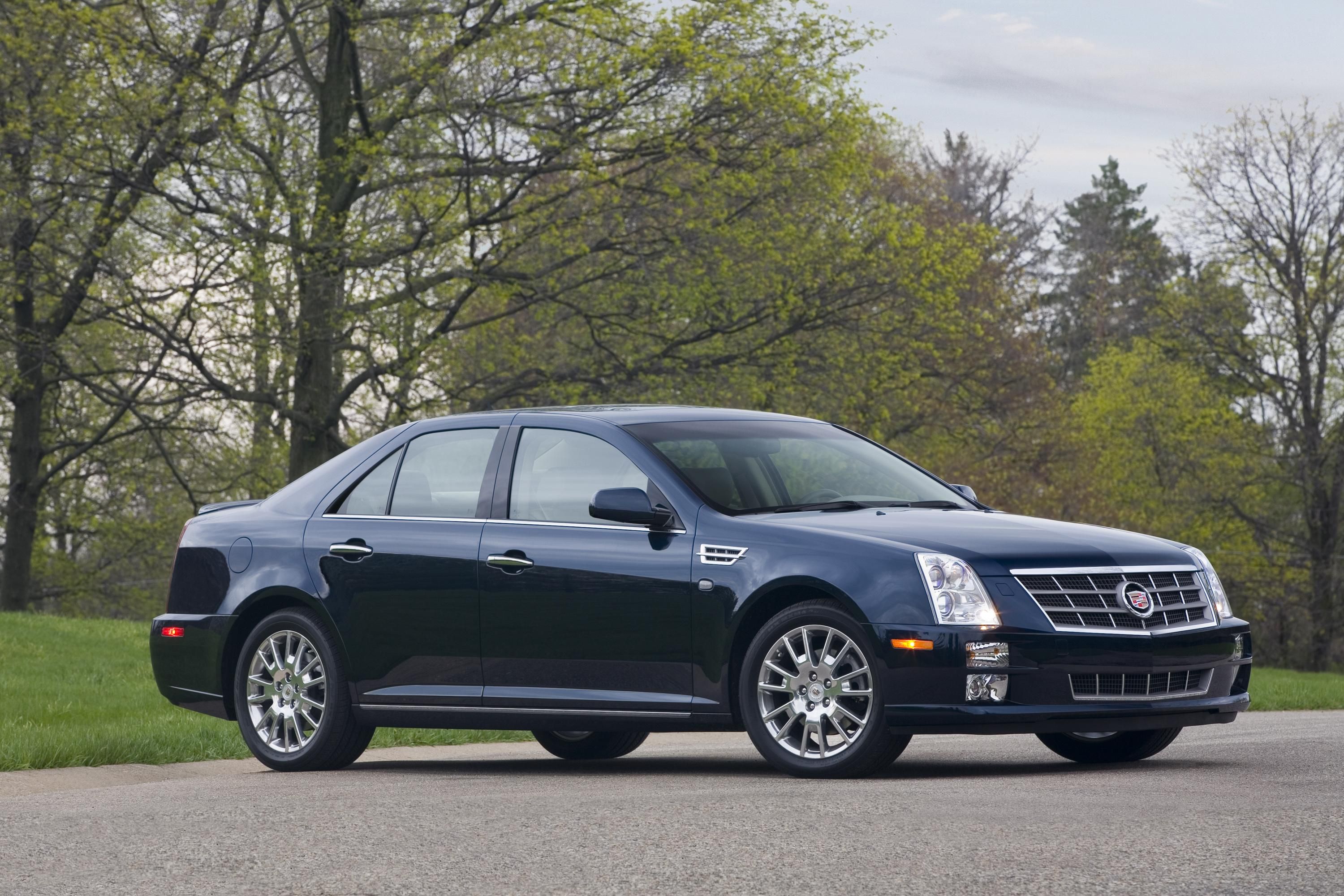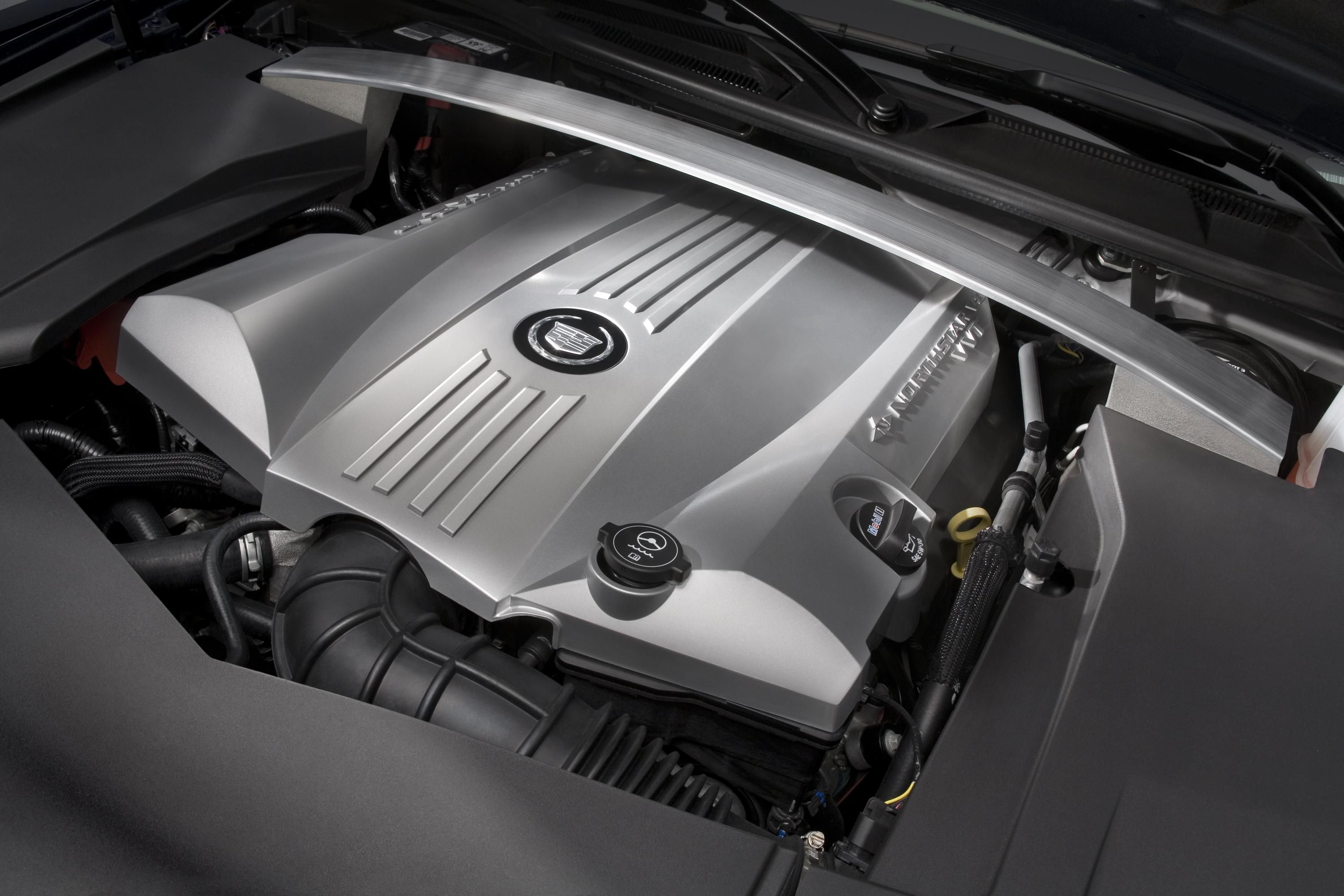The 2008 Cadillac STS, featuring refreshed signature styling inside and out; a new, standard 298-horsepower (222 kW) V-6 engine; and a host of new vehicle technologies, debuts at next week’s New York Auto Show, April 6-15, at the Jacob Javits Convention Center.
2008 Cadillac STS
- Make: Array
- Model: 2008 Cadillac STS
- Engine/Motor: four-stroke, liquid cooled, 90 degree V-Twin, DOHC, 8-valves
- Transmission: 6-speed with #428 chain final drive
- [do not use] Vehicle Model: Array
“For the past two decades, the Cadillac STS has been a showcase of luxury, performance and technology,” said Jim Taylor, Cadillac general manger. “The new 2008 STS extends that heritage with a bold new look, the debut of a new, high-tech standard engine and some of the industry’s most advanced safety technology.”
Refreshed design, inside and out
With overall dimensions slightly increased, the new STS conveys more of the design flair that has become a Cadillac signature. Up front, the dual-textured, multi-faceted grille first seen on the Sixteen concept and incorporated on both the Escalade and soon-to-be-launched 2008 CTS, has been adapted to the STS, giving the luxury performance sedan a more sophisticated appearance. Vertically stacked headlamps with large, dual 70mm projector lenses are encased in an aluminized, single-piece bezel. High Intensity Discharge (HID) headlamps are now available on V-6 models.
Also available on V-6 models for the first time are Intellibeam headlamps. The headlamps automatically switch gradually from high beam to low beam when vehicles approach or the vehicle is approaching taillamps. The lower front fascia is a new design, with a new intake and grille patterned after current Cadillac ‘V’ cues. New, narrower side marker lamps are added.
Similarly, side air extractors, again inspired by the Sixteen and Escalade, are now incorporated in the front fenders of the STS.
New styling touches also include chrome-plated door handles and new lower rocker moldings that blend into the lower line of the vehicle for more presence and refinement.
At the rear, the new fascia is now body-color, and is highlighted with the addition of polished, aluminum three-inch exhaust tips.
New, polished 18-inch by 8-inch aluminum 14-spoke wheels are available. For these available wheels, Michelin W-rated, 235/50R18 tires are used up front, and the rear wheels are fitted with 255/45R18 all-season radials.
Inside, STS’s luxurious interior includes a new steering wheel with available genuine Sapele Pommele wood trim. Sapele is an exotic wood more commonly used in fine furniture and musical instruments. A heated steering wheel also is available. The center stack of the instrument panel is revised with the addition of wood trim that has new metallic surroundings.
New, available features for the STS include a head-up display on V-6 models. The head-up display projects key driving information (such as speedometer ratings) onto the windshield, enabling drivers to keep their eyes on the road.
STS adds direct-injection V-6
For 2008, STS will be the first GM vehicle equipped with a new 3.6-liter direct-injected V-6 engine. The new base powerplant, with 298 horsepower (222 kW), delivers 40 more horsepower; and torque is increased to 268 lb.-ft. (371 Nm) – up from 252 lb.-ft. (348 Nm) on the current base engine.
The new direct-injected 3.6L will be mated to the Hydra-Matic 6L50 six-speed automatic transmission, the first pairing of this transmission with a V-6 engine. Additionally, the STS V-6 will continue to be available with all-wheel drive (AWD) for 2008.
Advantages of the new direct-injected engine include a 25-percent reduction in cold-start hydrocarbon emissions. Additionally, despite the 15-percent increase in power, fuel economy is expected to increase slightly.
Lane departure technology debuts
Continuing Cadillac’s commitment to using advanced safety features, the 2008 STS will offer new features including a new performance handling package; enhanced variable-effort steering with StabiliTrak on V-8 models; and new lane departure warning and blind side alerts.
The new performance handling package will be available for V-8-equipped rear-wheel-drive and all-wheel-drive models and V-6-equipped rear-drive models. The package includes 18-inch by 8.5-inch aluminum alloy, chrome-plated wheels fitted with new P255/45R18 Michelin Pilot Sport summer-only tires.
Brembo brakes with four-piston calipers provide enhanced braking, with front rotors measuring 14-inch by 1.2-inch (355mm x 32mm) coupled with 14.4-inch by 1.1-inch (365mm x 28mm) rear rotors. All four rotors are vented.
In addition to controlling brakes and reducing engine power, the latest iteration of StabiliTrak combines active front steering to turn the front wheels into the skid when rear wheels lose traction. The system includes a new steering motor assembly combined with computer-driven electronic controls that measure wheel slippage at all four wheels independently during acceleration, braking and adverse road conditions.
To help alert drivers to maintain their position on the road, the STS will be available with a new lane departure system. Controlled by a camera located in the rearview mirror that reads the lines in the road, the system will alert drivers when they have strayed into another lane. Drivers will get both audible and visual alert cues.
Another new feature is an available blind spot alert system. The radar-based convenience feature will provide drivers with a visual alert that appears on the outside rearview mirror when vehicles appear in a specified side zone.
The 2008 STS is expected to be available in Cadillac dealerships by mid-summer. Introductory pricing will be announced at a later date.
-----
Engines and technology
The 2008 Cadillac STS debuts next month with a new, 302-horsepower engine with direct injection technology that improves fuel economy and reduces emissions. In addition, Cadillac's luxury performance sedan also showcases enhanced signature styling and the addition of leading-edge safety technology.
"For the past two decades, the Cadillac STS has been a showcase of luxury, performance and technology," says Jim Taylor, Cadillac general manager. "The enhanced 2008 model extends that with bolder design, more standard power, better fuel efficiency, improved emissions and new safety technology."
New direct injection V-6 debuts
For 2008, STS will be the first GM vehicle equipped with a new 3.6L direct injection V-6 engine. Direct Injection, an advanced system for more precise and productive fuel delivery, enables the rare achievement of simultaneous gains in power, fuel efficiency and emissions performance.
The new standard engine for STS delivers a SAE-certified 302 horsepower (225 kW) at 6300 rpm,* 47 more horsepower (35 kW) than the previous 3.6-liter V-6. Torque is also increased to 272 lb.-ft. (366 Nm) at 5200 rpm,* an upgrade of 20 lb.-ft. (27 Nm). At the same time, the engine is expected to deliver improved fuel efficiency. Official EPA fuel economy statistics for the 2008 model have not yet been announced. On the outgoing 2007 model STS, EPA fuel economy is 18 mpg city and 27 mpg hwy.
Additionally, direct injection's more efficient operation enables a 25-percent reduction in cold-start hydrocarbon emissions.
Coupled to the new V-6 engine will be the 6L50 six-speed automatic transmission, introduced last year on Northstar V-8 models, which has a generous 6.04:1 overall ratio that enables a steep first-gear that helps deliver strong launch acceleration. The STS V-6 continues to be available with all-wheel drive for 2008.
New technology
Continuing Cadillac's commitment to the advancement of safety and performance attributes, the 2008 STS includes new systems and advanced technologies to enhance driver awareness and control.
For the first time, Cadillac's acclaimed StabiliTrak electronic stability control system now includes the optional addition of active steering technology. In addition to controlling brakes and reducing engine power, the latest iteration of StabiliTrak combines active front steering to turn the front wheels into the skid when rear wheels lose traction. The system includes a new steering motor assembly combined with computer-driven electronic controls that measure wheel slippage at all four wheels independently during acceleration, braking and adverse road conditions.
Active steering will be available exclusively on all-wheel-drive V-8 models.
GM's Lane Departure Warning System also debuts on the 2008 STS. Controlled by a camera located in the rearview mirror that reads the lines in the road, the system will alert drivers when they have strayed into another lane. Drivers get both an audible and visual alert cue.
When the Lane Departure Warning System is engaged, a driver traveling at 35 mph or more who crosses a detected lane marking without signaling is alerted in two ways: The system flashes an amber indicator light located in the fuel gauge of the instrument panel, and an alerting chime of three beeps is played. The system does not steer the vehicle; it is designed only to alert drivers so they can take appropriate action to move the vehicle back into the lane.
GM's Side Blind Zone Alert System extends and enhances driver awareness and vision. Alternating radar beams in Side Blind Zone Alert System sweep adjacent lanes of traffic, covering a zone of about one lane over from both sides of the vehicle, or 11 feet (3.5 m). The zone starts at each side mirror and goes back about 16 feet (5 m).
When the system is engaged, a driver will know that following vehicles in the adjacent lanes are entering their side blind zone when an amber symbol, located in the outside rearview mirror, is illuminated.
The system is not designed to detect vehicles outside of the side blind zone that may be rapidly approaching, or detect pedestrians, bicyclists or animals. It's designed to ignore infrastructure such as fire hydrants or parked cars. In addition, the system displays do not come on while the vehicle is approaching or passing other vehicles.
The Lane Departure Warning and Side Blind Zone Alert systems can be manually turned off by the driver.
A new performance handling package will be available for V-8-equipped rear-wheel and all-wheel-drive models and V-6-equipped rear-drive models. The package includes 18-inch x 8.5-inch aluminum alloy, chrome-plated wheels fitted with new P255/45R18 Michelin Pilot Sport summer-only tires.
Four-piston caliper Brembo brakes, with front rotors measuring 355 mm x 32 mm and 365 mm x 28 mm rear rotors, provide enhanced baking. All four rotors are vented.
A bolder new look, inside and out
The new STS injects more of the bold design flair that has become a Cadillac signature. Up front, the dual-textured, multi-faceted grille - first seen on the landmark Cadillac Sixteen concept car and incorporated on both the Escalade and soon-to-be-launched CTS - has been adapted to the STS.
High Intensity Discharge lamps and the Intellibeam automatic high-beam system are added for the first time for V-6 models. The lower front fascia features a new intake and grille pattern evoking Cadillac's V-Series high-performance models.
Similarly, side air extractors, again inspired by the Sixteen and Escalade, are now
incorporated into the front fenders of STS. New chrome-plated door handles and lower rocker moldings are added for more presence and refinement. At the rear, the new fascia is now body color and is highlighted with polished aluminum three-inch exhaust tips. New, polished 18-inch x 8-inch aluminum 14-spoke wheels are available.
The luxurious interior of the STS includes a new steering wheel with available genuine Sapele Pommele wood trim. The center stack of the instrument panel is revised with the addition of wood and metallic trim.
-----
GM's First V-6 Engine With Direct Injection
General Motors is introducing its new 3.6L V-6 gasoline engine with direct injection and variable valve timing (VVT) technologies in the 2008 Cadillac STS.
The new 3.6-liter all-aluminum dual overhead cam V-6 gasoline engine with direct injection and variable valve timing is GM's most powerful V-6 offering in North America and in other markets around the globe. It is of particular significance for power-conscious customers looking for great performance, improved fuel economy and lower emissions.
The new 3.6L V-6 (LLT) engine delivers outstanding performance ratings. Standard in the 2008 Cadillac STS, the engine is SAE certified and delivers 302 hp (225 kW) at 6300 rpm and 272 lb.-ft. (369 Nm) of torque at 5200 rpm.
"Our goal was to deliver an engine with outstanding power and improved efficiency, while providing a quiet and pleasant driving experience for Cadillac customers," said Tim Cyrus, chief engineer for high-feature V-6 and Northstar V-8 engines. "It's the latest example of our strategy to continue to reduce emissions and improve fuel economy without sacrificing performance."
The 3.6L V-6 engine is GM's third engine variant offered with direct injection technology.
With direct injection technology, fuel is sprayed directly into the engine cylinder where it is mixed with air. As the fuel vaporizes in the cylinder, the air and fuel mixture is cooled. This enables the use of a higher compression ratio in the combustion chamber, 11.3:1, which improves engine performance and efficiency.
On cold starts, direct injection can be controlled to create a richer air/fuel mixture around the spark plug, making it easier to ignite in a cold engine. This results in a smoother operation and an approximate 25-percent reduction in cold-start hydrocarbon emissions during the cold-start and warm-up.
Direct injection requires higher fuel pressure than conventional fuel-injected engines, and the engine-driven high-pressure fuel pump is used to supply up to 1,740 psi (120 bar) of pressure. The system regulates lower fuel pressure at idle - approximately 508 psi (35 bar) and higher pressure at wide-open throttle. The exhaust cam-driven high-pressure pump works in conjunction with a conventional fuel tank-mounted supply pump.
The 3.6-liter V-6 also features the U.S. automotive industry's first isolated fuel-injector system. This helps reduce the overall engine noise, providing customers a pleasant driving experience.
Four-cam phasing
In addition to direct injection, variable valve timing also helps reduce exhaust emissions and improve performance and fuel economy by optimizing the phasing of the intake and exhaust valves relative to the crankshaft position at all operating conditions. The result is linear delivery of torque, with near-peak levels over a broad rpm range, and high specific output (maximum horsepower per liter of displacement) without sacrificing overall engine response and driveability.
Cam phasing pays big dividends in reducing exhaust emissions by optimizing exhaust valve overlap and eliminating the need for a separate exhaust gas recirculation (EGR) system.
By closing the exhaust valves late at appropriate times, the cam phasers allow the engine to draw the desired amount of exhaust gas back into the combustion chamber, reducing unburned hydrocarbon emissions. The return of exhaust gases also decreases peak temperatures, which contributes to the reduction of oxides of nitrogen (NOx) emissions. In tandem with the dramatic 25-percent reduction in cold-start hydrocarbon emissions enabled by direct injection, the 3.6-liter VVT DI V-6 surpasses all emissions mandates, and does so without complex, weight-increasing emissions control systems such as EGR and air injection reaction (AIR).
3.6-liter VVT DI features
The 3.6-liter VVT DI is based on GM Powertrain's sophisticated 60-degree dual overhead cam (DOHC) V-6 engine. It is the latest member of a growing family of GM Powertrain V-6 engines developed for applications around the world, drawing on the best practices and creative expertise of GM's technical centers in Australia, Germany, North America and Sweden.
Features found on the 3.6-liter VVT DI include:
- Aluminum engine block and cylinder heads
- Dual overhead cams with four valves per cylinder and silent chain primary drive
- High-pressure, engine-driven fuel pump
- Advanced multi-outlet fuel injectors developed to withstand high pressure and heat
- Isolated fuel injector system
- Stainless steel, variable pressure fuel rail
- Four-cam phasing (variable valve timing)
- 11.3:1 compression ratio
- Cast-aluminum pistons with floating wrist pins and oil squirters
- Polymer coated piston skirts
- Forged steel crankshaft
- Sinter-forged connecting rods
- Structural cast-aluminum oil pan with steel baffles
- Electronic throttle control with integrated cruise control
- Coil-on-plug ignition
- Advanced direct injection capable engine control module (ECM)
- Optimized exhaust manifolds with close-coupled catalytic converters
- Fully isolated composite camshaft covers
- Outstanding noise, vibration and harshness control
- Maximum durability with minimal maintenance
- Common manufacturing practices for efficiency and exceptional quality
By the end of 2008, GM forecasts it will produce as many as 200,000 vehicles globally with direct injection technology, and projects that by 2010, one of every six GM vehicles in North America will be equipped with a direct injection engine.
-----
Next-Generation Stabilitrak With Active Front Steering
StabiliTrak® 3.0, the third generation of General Motors' electronic stability control system, will make its debut on the 2008 Cadillac STS luxury performance sedan.
This latest generation of StabiliTrak - first introduced a decade ago on the Cadillac Seville - incorporates active front steering (AFS) technology and will be available on V-8 all-wheel-drive-equipped models of the STS.
In addition to controlling brakes and reducing engine power, StabiliTrak 3.0 with AFS incorporates a steering motor assembly combined with computer-driven electronic controls that independently measure wheel slippage at all four wheels during acceleration, braking and adverse road conditions.
As a result, when a vehicle's rear wheels lose traction, the AFS system turns the front wheels into the skid - exactly as a trained driver would - to help prevent a loss of control.
For example, if a driver experiences a skid or slide because of poor road conditions, the active steering will react to information from StabiliTrak's yaw rate sensors to modify the steering angle of the front wheels to stabilize the vehicle. This occurs must faster than the driver can react, and if the active steering wheel angle is not enough, other stability control systems - such as braking and engine control - intervene to help.
The AFS technology incorporated on StabiliTrak 3.0-equipped versions of STS also continuously varies the steering ratio (the degree that wheels turn in response to the steering wheel), based on vehicle speed in a range from 12:1 to 20:1.
In turn, vehicles equipped with StabiliTrak 3.0 require fewer steering wheel turns in low-speed parking maneuvers, and the technology makes high-speed driving more relaxing because it is less sensitive to smaller "twitch" inputs. The variable ratio capability of AFS is different from variable assist power steering, which only varies the amount of steering effort, not the actual steering ratio.
In addition to AFS, StabiliTrak 3.0 incorporates multiple chassis control systems, including those for anti-lock brakes (ABS) and traction control (TCS); Magnetic Ride Control (MR) dampers; and inertial and steering sensors. All work together via a GM-proprietary supervisor control module.
StabiliTrak uses its network of sensors to continuously monitor the vehicle's movement and driver's actions, measuring cornering forces, gas pedal movement, brake pedal pressure and how many degrees the steering wheel has been turned, along with other considerations.
Using the data gathered, StabiliTrak takes measures within milliseconds to keep the vehicle from under- or over-steering, as needed. Such measures can include closing the throttle to reduce vehicle speed, applying brakes independently, or - as a result of AFS - modifying the steering angle of the front wheels.
In addition to StabiliTrak 3.0 with AFS, the 2008 Cadillac STS incorporates a host of technology enhancements, including a new, SAE-certified 302-horsepower (225 kW) 3.6L V-6 VVT engine with direct injection as standard equipment; a new Lane Departure Warning System; and a new radar-based Side Blind Zone Alert System.
The 2008 STS is expected to be available in June. The StabiliTrak 3.0 technology will be available after the start of production.
The 2008 STS begins production this spring, with initial availability beginning in June.

